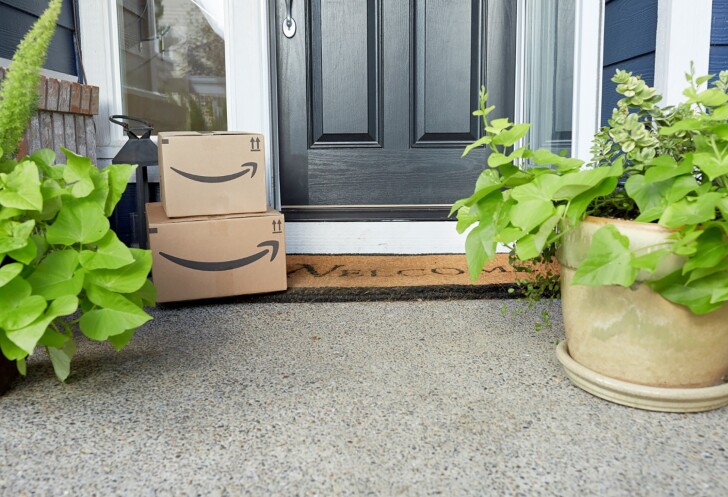Packaging Innovation
Our customers want right-sized, recyclable packaging that minimizes waste and ensures damage-free delivery. As we work to eliminate unnecessary packaging altogether, we’re optimizing the type, material, and weight of additional packaging when it’s needed to deliver products safely. We’re also increasing the recyclability of our packaging for easy curbside recycling for our customers.



We continually work to reinvent and simplify our packaging options using a science-based approach that combines lab testing, machine learning, materials science, and manufacturing partnerships.
When additional packaging is required, we optimize with lighter, right-sized options that reduce waste and carbon, while ensuring products arrive safely. We strive to use materials that are curbside recyclable and have a lower carbon footprint. We also partner with industry peers to create and scale solutions across the packaging supply chain.
We seek to maximize our use of low-waste packaging types while achieving year-over-year reductions in the volume of higher-waste packaging options.
Sometimes the best solution is to use what already exists. That’s the idea behind our Ships In Product Packaging (SIPP) program, where eligible items are delivered in the original manufacturer’s packaging without additional Amazon packaging. This allows us to avoid unnecessary packaging altogether and reduce the weight of deliveries.
We believe many products can be shipped without added packaging and are expanding our SIPP program by identifying, evaluating, and certifying items already packaged in materials suitable for shipping. We also encourage selling partners and vendors to re-engineer packaging to meet SIPP standards.
We’re innovating the materials we use in our packaging so it can be easily recycled by customers through curbside recycling programs. We are phasing out padded bags containing plastics in favor of recyclable alternatives.
For example, our paper padded mailer is a flexible packaging option that offers the same recyclability benefits as corrugated boxes, while taking up less space in transit and in the recycling bin. In 2022, we expanded our use of paper padded mailers across the U.S. and Canada, replacing 99% of harder-to-recycle mixed-material padded bags.
Approximately 92% of packaging material weight in the U.S. and Canada (excluding produce bags and coolants) is curbside recyclable where programs are available. All EU one-way delivery packaging (excluding coolants) is also curbside recyclable. We also partner with organizations like The Recycling Partnership and Sustainable Packaging Coalition to improve recycling infrastructure.
With millions of products and an infinite number of order combinations, identifying the optimal packaging solution to keep each unique order safe during transit represents a significant challenge. We use machine learning algorithms to determine the most efficient option for each order we fulfill.
These cutting-edge technologies help pinpoint the optimal packaging type for each item—from bag to box—depending on the level of protection needed. Where possible, we use lightweight packaging by prioritizing flexible paper bags and envelopes, which are up to 90% lighter than similar-sized, rigid corrugate boxes.
For orders with multiple items, machine learning algorithms help us determine the optimal fit to reduce empty space in boxes. Optimized shipments also require less space in the vehicles that deliver packages to our customers, helping reduce the number of vehicles on the road.
Another way we use machine learning is to optimize the suite of cardboard box options at any one facility. Our web-based tool PackOpt determines a facility’s optimal selection, based on the order patterns unique to that facility. In North America, applying PackOpt technology has resulted in an annual reduction in cardboard waste of 7% to 10%, saving roughly 60,000 tons of cardboard annually.












